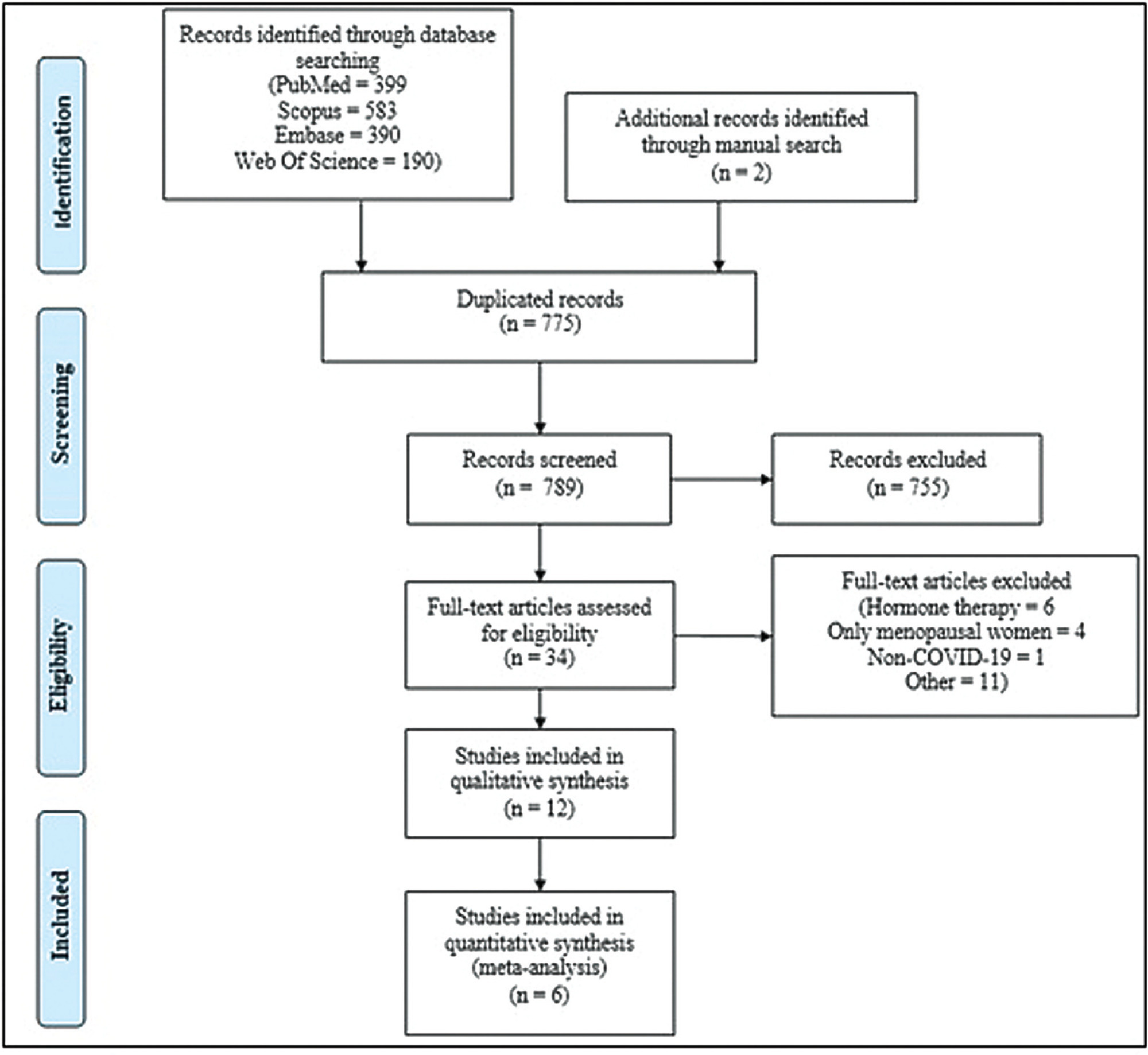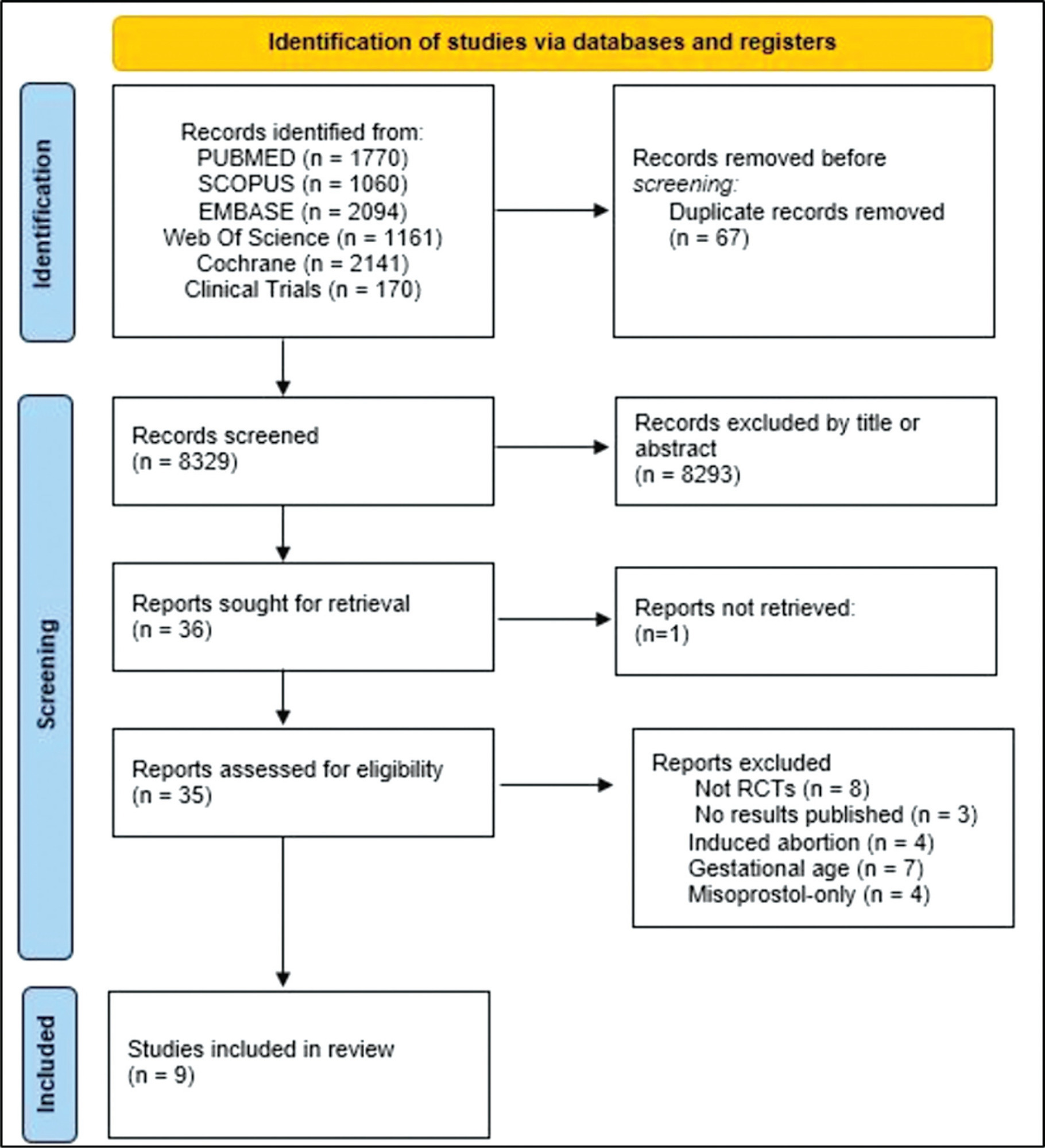-
Review Article04-09-2024
Timing of semen cryopreservation: before or after processing?
Revista Brasileira de Ginecologia e Obstetrícia. 2024;46:e-rbgo36
Abstract
Review ArticleTiming of semen cryopreservation: before or after processing?
Revista Brasileira de Ginecologia e Obstetrícia. 2024;46:e-rbgo36
Views394Abstract
Objective:
Seminal cryopreservation causes significant damage to the sperm; therefore, different methods of cryopreservation have been studied. The aim of the study was to compare the effects of density gradient processing and washing/centrifugation with seminal plasma removal for cryopreservation in semen parameters.
Methods:
Seminal samples of 26 normozoospermic patients were divided into 3 parts: with seminal plasma; after washing/centrifugation; and after selection through density gradient. The samples were cryopreserved for at least two weeks. Motility, sperm count, morphology and viability were evaluated before cryopreservation and after thawing.
Results:
Density gradient processing selected motile and viable sperm with normal morphology in fresh samples (p<0.05). Cryopreservation negatively affected all sperm parameters regardless of the processing performed, and even if the sperm recovery was lower in the density gradient after the thawing, progressive motility, total motility, viability and morphology remained higher (p<0.05).
Conclusion:
Cryopreservation significantly compromises sperm parameters (motility, morphology, viability). In normozoospermic patients, the density gradients select better quality spermatozoa compared to other processing methods; this benefit was kept after thawing.
Key-words CentrifugationCryopreservationDensity gradientSemenSeminal plasmaSperm countSperm washSpermatozoaSee more -
Review Article03-15-2024
A meta-analysis of ferric carboxymaltose versus other intravenous iron preparations for the management of iron deficiency anemia during pregnancy
Revista Brasileira de Ginecologia e Obstetrícia. 2024;46:e-rbgo21
Abstract
Review ArticleA meta-analysis of ferric carboxymaltose versus other intravenous iron preparations for the management of iron deficiency anemia during pregnancy
Revista Brasileira de Ginecologia e Obstetrícia. 2024;46:e-rbgo21
Views540Abstract
Objective:
We conducted a meta-analysis of randomized clinical trials evaluating the clinical effects of ferric carboxymaltose therapy compared to other intravenous iron in improving hemoglobin and serum ferritin in pregnant women. We also assessed the safety of ferric carboxymaltose vs. other intravenous iron.
Data source:
EMBASE, PubMed, and Web of Science were searched for trials related to ferric carboxymaltose in pregnant women, published between 2005 and 2021. We also reviewed articles from google scholar. The keywords "ferric carboxymaltose," "FCM," "intravenous," "randomized," "pregnancy," "quality of life," and "neonatal outcomes" were used to search the literature. The search was limited to pregnant women.
Selection of studies:
Studies related to ferric carboxymaltose in pregnancy were scanned. Observational studies, review articles, and case reports were excluded. Randomized studies in pregnant women involving ferric carboxymaltose and other intravenous iron formulations were shortlisted. Of 256 studies, nine randomized control trials were selected.
Data collection:
Two reviewers independently extracted data from nine selected trials
Data synthesis:
The final effect size for increase in hemoglobin after treatment was significant for ferric carboxymaltose vs. iron sucrose/iron polymaltose (standard mean difference 0.89g/dl [95% confidence interval 0.27,1.51]). The final effect size for the increase in ferritin after treatment was more for ferric carboxymaltose vs. iron sucrose/iron polymaltose (standard mean difference 22.53µg/L [-7.26, 52.33]). No serious adverse events were reported with ferric carboxymaltose or other intravenous iron.
Conclusion:
Ferric carboxymaltose demonstrated better efficacy than other intravenous iron in increasing hemoglobin and ferritin levels in treating iron deficiency anemia in pregnant women.
Key-words AnemiaFerric carboximaltoseFerric oxideferritinhemoglobinIntravenous ironIron polymaltoseIron sucroseIron-deficiency anemiaPregnancysaccharatedSee more -
Review Article03-14-2024
Online scientific research on placentophagy: a bibliometric analysis
Revista Brasileira de Ginecologia e Obstetrícia. 2024;46:e-rbgo4
Abstract
Review ArticleOnline scientific research on placentophagy: a bibliometric analysis
Revista Brasileira de Ginecologia e Obstetrícia. 2024;46:e-rbgo4
Views304See moreAbstract
Objective:
To classify the bibliometric indicators of online scientific research on placentophagy.
Methods:
A bibliometric study was conducted to quantify the scientific production of authors and institutions with the aim of highlighting the growth and impact of these publications nationally and internationally. The Bradford Law, network maps, and textual statistics were used, with searches conducted in libraries and databases in October 2021.
Results:
The sample consisted of 64 articles, whose primary authors were associated with 49 institutions, and mostly with degrees in anthropology. The United States of America was the country that published the most papers on the theme, and most studies were reviews with individual production. Through the term analysis, it was found that the predominant themes regarding placentophagy were the following: Alternative therapy for women's health, methodologies used for research in this area, period of placenta ingestion (postpartum period), and its benefits.
Conclusion:
The bibliometric indicators found are essential for the development of future research.
-
Review Article03-14-2024
Breast Imaging Reporting and Data System (BI-RADS®): a success history and particularities of its use in Brazil
Revista Brasileira de Ginecologia e Obstetrícia. 2024;46:e-rbgo6
Abstract
Review ArticleBreast Imaging Reporting and Data System (BI-RADS®): a success history and particularities of its use in Brazil
Revista Brasileira de Ginecologia e Obstetrícia. 2024;46:e-rbgo6
Views380See moreAbstract
BI-RADS® is a standardization system for breast imaging reports and results created by the American College of Radiology to initially address the lack of uniformity in mammography reporting. The system consists of a lexicon of descriptors, a reporting structure with final categories and recommended management, and a structure for data collection and auditing. It is accepted worldwide by all specialties involved in the care of breast diseases. Its implementation is related to the Mammography Quality Standards Act initiative in the United States (1992) and breast cancer screening. After its initial creation in 1993, four additional editions were published in 1995, 1998, 2003 and 2013. It is adopted in several countries around the world and has been translated into 6 languages. Successful breast cancer screening programs in high-income countries can be attributed in part to the widespread use of BI-RADS®. This success led to the development of similar classification systems for other organs (e.g., lung, liver, thyroid, ovaries, colon). In 1998, the structured report model was adopted in Brazil. This article highlights the pioneering and successful role of BI-RADS®, created by ACR 30 years ago, on the eve of publishing its sixth edition, which has evolved into a comprehensive quality assurance tool for multiple imaging modalities. And, especially, it contextualizes the importance of recognizing how we are using BI-RADS® in Brazil, from its implementation to the present day, with a focus on breast cancer screening.
-
Review Article00-00-2024
Non-RhD alloimmunization in pregnancy: an updated review
Revista Brasileira de Ginecologia e Obstetrícia. 2024;46:e-rbgo22
Abstract
Review ArticleNon-RhD alloimmunization in pregnancy: an updated review
Revista Brasileira de Ginecologia e Obstetrícia. 2024;46:e-rbgo22
Views534Abstract
RhD alloimmunization in pregnancy is still the main cause of hemolytic disease of the fetus and neonate (HDFN). Nevertheless, there are other antigens that may be associated with the occurrence of this phenomenon and that have been growing in proportion, given that current prevention strategies focus only on anti-RhD antibodies. Although not widespread, the screening and diagnostic management of the disease caused by these antibodies has recommendations in the literature. For this reason, the following review was carried out with the objective of listing the main red blood cell antigen groups described — such as Rh, ABO, Kell, MNS, Duffy, Kidd, among others — addressing the clinical importance of each one, prevalence in different countries, and recommended management when detecting such antibodies during pregnancy.
Key-words Blood group antigensErythroblastosisfetalFetal diseasesNon-Rh alloimmunizationPregnancyPrevalenceRh isoimmunizationSee more -
Review Article01-11-2023
Incidence and Outcomes Associated with Menopausal Status in COVID-19 Patients: A Systematic Review and Meta-analysis
Revista Brasileira de Ginecologia e Obstetrícia. 2023;45(12):796-807
Abstract
Review ArticleIncidence and Outcomes Associated with Menopausal Status in COVID-19 Patients: A Systematic Review and Meta-analysis
Revista Brasileira de Ginecologia e Obstetrícia. 2023;45(12):796-807
Views204See moreAbstract
Objective
Menopause causes several changes in the body that may affect the response to COVID-19. We aimed to investigate the possible association between menopausal status and incidence and outcomes in COVID-19 patients.
Methods
Combinations of keywordsCOVID-19, menopause, and estrogen were used to search the PubMed, Embase, Web-of-Science, and Scopus databases for articles reporting the incidence and outcomes of COVID-19 (discharge, length-of-admission, intensive care, or mortality) in premenopausal women, available through December 29, 2022. Data from studies comparing the incidence of COVID-19 infection with the age-matched male population were pooled and meta-analyzed using a random-effects model.
Results
Overall, 1,564 studies were retrieved, of which 12 were finally included in the systematic review to compare disease outcomes, and 6 were meta-analyzed for the incidence of COVID-19 in premenopausal and postmenopausal women. All studies reported better COVID-19-associated outcomes in premenopausal women compared with postmenopausal women. After adjusting for confounding factors, three studies found better outcomes in postmenopausal women, and two found no association between menopausal status and COVID-19 outcomes. Our meta-analysis found a higher incidence of COVID-19 infection among premenopausal women than postmenopausal women, when compared with age-matched men (odds ratio = 1.270; 95% confidence interval: 1.086–1.486; p = 0.003).
Conclusion
The incidence of COVID-19 was significantly higher in premenopausal women than in postmenopausal women when compared with age-matched men. Although premenopausal women may have more favorable COVID-19-associated outcomes, the presumed preventive effect of estrogens on the incidence and related outcomes of COVID-19 in premenopausal women cannot be proven at present. Further longitudinal studies comparing pre- and post-menopausal women are required to provide further insight into this matter.

-
Review Article01-11-2023
Efficacy, Safety, and Acceptability of Misoprostol in the Treatment of Incomplete Miscarriage: A Systematic Review and Meta-analysis
Revista Brasileira de Ginecologia e Obstetrícia. 2023;45(12):808-817
Abstract
Review ArticleEfficacy, Safety, and Acceptability of Misoprostol in the Treatment of Incomplete Miscarriage: A Systematic Review and Meta-analysis
Revista Brasileira de Ginecologia e Obstetrícia. 2023;45(12):808-817
Views380See moreAbstract
Objective
To assess the efficacy, safety, and acceptability of misoprostol in the treatment of incomplete miscarriage.
Data sources
The PubMed, Scopus, Embase, Web of Science, Cochrane Library, and Clinical Trials databases (clinicaltrials.gov) were searched for the relevant articles, and search strategies were developed using a combination of thematic Medical Subject Headings terms and text words. The last search was conducted on July 4, 2022. No language restrictions were applied.
Selection of studies
Randomized clinical trials with patients of gestational age up to 6/7 weeks with a diagnosis of incomplete abortion and who were managed with at least 1 of the 3 types of treatment studied were included. A total of 8,087 studies were screened.
Data collection
Data were synthesized using the statistical package Review Manager V.5.1 (The Cochrane Collaboration, Oxford, United Kingdom). For dichotomous outcomes, the odds ratio (OR) and 95% confidence interval (CI) were derived for each study. Heterogeneity between the trial results was evaluated using the standard test, I2 statistic.
Data synthesis
When comparing misoprostol with medical vacuum aspiration (MVA), the rate of complete abortion was higher in the MVA group (OR = 0.16; 95%CI = 0.07–0.36). Hemorrhage or heavy bleeding was more common in the misoprostol group (OR = 3.00; 95%CI = 1.96–4.59), but pain after treatment was more common in patients treated with MVA (OR = 0.65; 95%CI = 0.52–0.80). No statistically significant differences were observed in the general acceptability of the treatments.
Conclusion
Misoprostol has been determined as a safe option with good acceptance by patients.

-
Review Article01-11-2023
Combined Oral Contraceptive Use and the Risk of Cervical Cancer: Literature Review
Revista Brasileira de Ginecologia e Obstetrícia. 2023;45(12):818-823
Abstract
Review ArticleCombined Oral Contraceptive Use and the Risk of Cervical Cancer: Literature Review
Revista Brasileira de Ginecologia e Obstetrícia. 2023;45(12):818-823
Views344See moreAbstract
Cervical cancer (CC) is caused by persistent infection of human papillomavirus of high oncogenic risk (hr-HPV); however, several cofactors are important in its carcinogenesis, such as smoking, multiparity, and prolonged use of oral hormonal contraceptives (COCs). Worldwide, 16% of women use COCs, whereas in Brazil this rate is of ~ 30%. The safety and adverse effects of COCs are widely discussed in the literature, including the increase in carcinogenic risk. Due to the existence of several drugs, combinations, and dosages of COCs, it is hard to have uniform information in epidemiological studies. Our objective was to perform a narrative review on the role of COCs use in the carcinogenesis of cervical cancer. Several populational studies have suggested an increase in the incidence of cervical cancer for those who have used COCs for > 5 years, but other available studies reach controversial and contradictory results regarding the action of COCs in the development of CC.


